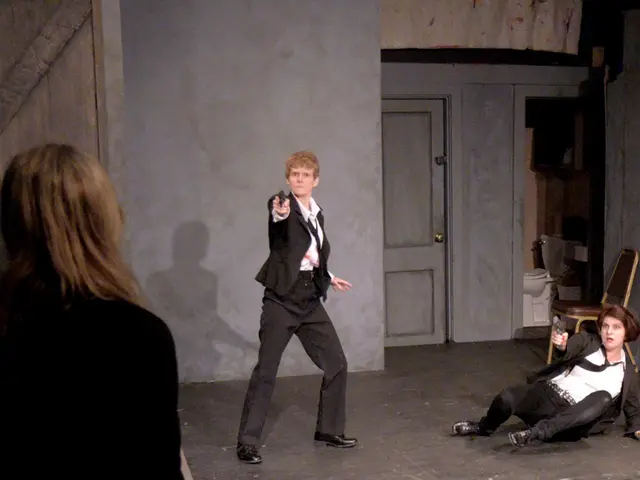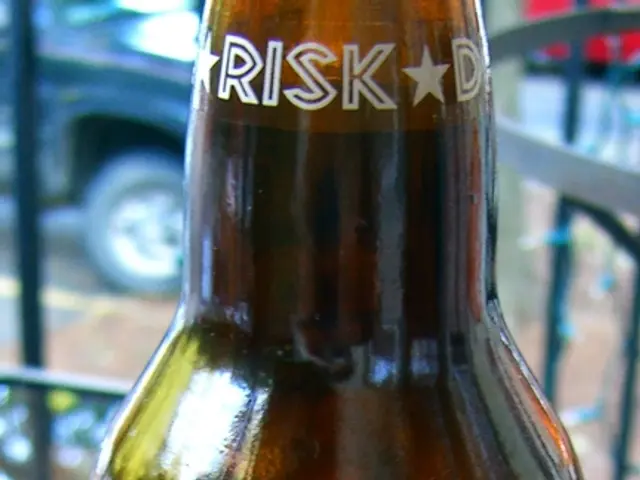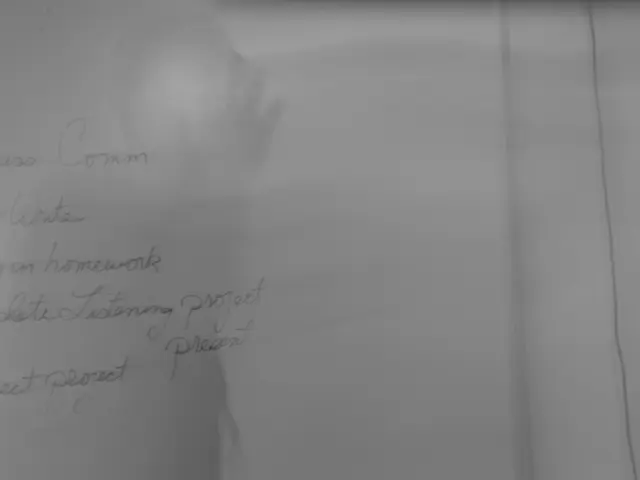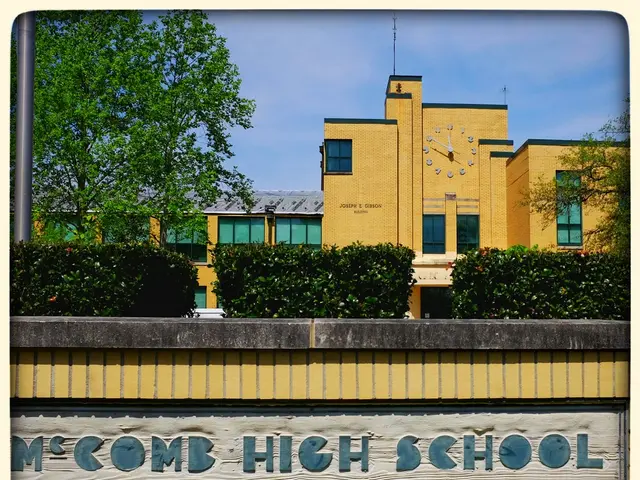Neighborhood Tension in Liberty Village: Fierce Coyote Alters and Opposing Opinions Escalate Conflict in Toronto
The Glass Dome Shakes for Toronto's Slain Coyotes
Evoking a rhythmic elegy, drumming group Buffalo Charging thundered on Wednesday, paying tribute to the two coyotes killed by Toronto's city authorities within the past week. Centered in Liberty Village, these wild animals had reportedly become volatile due to human disregard for nature, a concern echoed by Anishinaabe elder Vivian Recollet during a ceremony at one of the site's buildings.
"These slain coyotes were victims of our thoughtless relationship with nature," Recollet pointed out, as she pointed to the surrounding trees being systematically removed. "Our animal kin are displaced, and it's time for us to confront the consequences of our actions."
Debate surrounding the downtown coyote attacks, which resulted in the death and injury of several pets, has escalated. While some residents in the Liberty Village neighborhood perceived the city's decision to shoot the animals as a long-awaited relief, others decried this move, viewing it as an unnecessary sacrifice of wild life for the sake of urban convenience.
Ruby Kooner, a face of the resident-led movement advocating for coyote control, expressed a somber tone about the coyotes' demise, describing it as "an unfortunate consequence of the city's indecisiveness." Some neighbors, however, hold the vocal residents themselves responsible for the animals’ deaths.
"Toronto must step up its game," Kooner insisted. "To brand itself as a city championing coexistence, sustainability, and urban planning excellence, it cannot continue to make crisis-driven, backroom decisions with detrimental effects on ecological stability."
The turbulent months have generated tension between pets and coyotes, amplified by public fear, misinformation, conflicting expert opinions, and suit threats. The population of Liberty Village found itself at odds with City Hall, both residents and city staff expressing their frustrations throughout the ordeal.
Dodging Destruction: The Coyote's Plight
Anchored in Sewell's Fall, the coyotes have wandered the Fort York-Liberty Village area for decades, thriving on a diet of mice and berries. The sudden appearance of emboldened, aggressive animals stealing pets during dark, early morning hours rocked the community.
Kooner, a Liberty Village resident since more than three years ago, had seen coyotes previously - quiet and distant, oblivious to her small Maltese-shih tzu-poodle, Amber. However, in November, two coyotes attacked Amber, leaving the 13-year-old Maltese mauled and dragging her pet away. A horrifying, heartbreaking event that left Kooner traumatized.
Tragedy struck again in January when a Chihuahua named Chico went missing during a walk only to be found dead under a staircase two days later.
Witnessing the lone confirmed attack on a human in the area was Steve Mann, an inventor famed as the "father of wearable computing." This unpleasant encounter occurred in Trillium Park at Ontario Place in December while he was swimming.
"That coyote hit her without warning, going for her legs with malicious intent," Mann recounted. "With my first-aid kit, I bandaged her, but both legs were heavily injured, with bite marks and bleeding. Thankfully, an ambulance arrived promptly."
Habitat Destruction: A Catalyst for Change
Camouflaged by construction, the coyotes had reportedly lost their habitat, leaving them with few options but to penetrate deeper into Liberty Village, a densely populated neighborhood offering a veritable buffet of small pets and minuscule green spaces.
Local Councillor Ausma Malik and MPP Chris Glover suspected that a provincial government decision to rip up a tree grove at Ontario Place in the fall, replacing it with a spa and parking lot, may have sparked the coyote crisis.
"The situation here has been unprecedented, following the denigration of the coyotes’ habitat at Ontario Place," said Malik. Kooner echoed this sentiment, affirming that "the hasty and negligent destruction of the ecosystem destabilized the locale, exacerbating the coyotes’ aggressiveness."
Wildlife experts claim the hurried waterfront development, which bypassed a complete environmental assessment, could have easily driven the coyotes into a corner, setting them on edge, or it may have been any recent developments in the area. In March, Carleton Grant, the city's head of By-law Enforcement and Administration, mentioned coyote dens covered in concrete in the area, but he declined to pinpoint the exact location or to place blame.
Feeding the Beast: Human-Induced Errors
Confusing wild animals with misplaced kindness, certain Liberty Village residents had allegedly fed the coyotes, giving them easy access to food. Wildlife experts agreed that this had made the situation worse, as it had taught the coyotes that humans were a source of sustenance.
Additionally, negligent waste management practices - leaving out garbage and neglecting to pick up pet waste - had helped to lure both coyotes and rats. Many residents were slack in leashing their animals, while others took matters into their own hands, pummeling coyotes with rocks or unleashing pets to attack the wild animals.
Repetitively, city officials urged residents to take three essential precautions: leash pets, clean up after them, and refrain from feeding the wildlife. Guidelines were available on signs around the neighborhood, disseminated in emails and letters, discussed at town halls, and even discussed in school assemblies.
Dueling Experts: Separating Fact from Fiction
Faced with mounting demand for action, the city assembled a panel of wildlife experts. In March, they agreed that coexistence between humans and coyotes was possible and advocated for hiring professionals to "harass" the coyotes to make them fear humans again. They reached out to Coyote Watch Canada for the job, while simultaneously negotiating with a veteran trapper known as the Critter Gitter, ready to eradicate the coyotes if they resisted humane deterrence efforts.
Remaining anonymous, the panel concluded that killing the coyotes was unethical, but if harassment failed, the most aggressive coyotes should be quietly dispatched. The panel's 16-page report declared that the coyote danger zone could not be eliminated.
City personnel and animal control officers worked diligently for over eight weeks, dedicating approximately eight hours a day to intimidating the coyotes by charging at them with open garbage bags, an approach that initially proved successful. However, the older coyotes' behavior continued to evolve, rendering aversion conditioning ineffective. The male coyote, responsible for most dog attacks, appeared to suffer from mange, a condition caused by the presence of parasites in the skin and fur. His mate was simply "present during some encounters," according to the city.
United We Stand: A Alliance Forms
The coyotes’ continued presence in the area prompted fear among some residents. Kooner formed the Coyote Safety Coalition in February, asserting that existing guidelines were inadequate and continued dialogue with city officials would impede progress. With six members on the core team and almost 900 supporters on Facebook, the group's mission was to increase public awareness through real-time alerts, dedicated website updates, and data visualizations.
City officials, however, suggested the coalition was part of the problem rather than a solution, alleging that the group spread misinformation and hindered progress toward resolving the issue. While blaming city policies was a common complaint among coalition members, they were also under fire from animal advocates who accused the group of distorting data to paint the coyotes in a wicked light.
Eventually, members of the coalition hired Dennis Murray, Canada Research Chair in integrated wildlife conservation at Trent University, to review the city panel's findings. Murray staunchly advocated for killing all the coyotes, declaring that constant harassment would only prolong the conflict. He felt the non-lethal approach taken by Coyote Watch Canada was misguided.
Stanley Gehrt, professor of wildlife ecology at Ohio State University, scrutinized both the city panel's findings and Murray's review. Gehrt agreed with Murray's assessment of the limitations of aversion conditioning but cautioned that lethal removal might lead to new coyotes moving into the area, perpetuating the cycle of conflict.
Quantifying the Threat: Sifting Through the Statistics
Pinpointing the scale of the coyote threat proved a challenge. The city claimed it had preserved 310 coyote reports between November and mid-April, of which 38 were deemed dangerous actions by coyotes. The city reported only two dog deaths and a single attack on a human.
In contrast, the Coyote Safety Coalition compiled 122 incidents in the same period, including over 90 attacks on dogs and four reported attacks on humans. According to Kooner, the coalition utilized multiple verification methods to substantiate reports, consulting with witnesses and cross-checking information whenever possible.
Some residents were reluctant to report coyote incidents due to perceived unfriendly responses from 311 operators. Kooner alleged that operators had been dismissive and accusatory, contributing to the reluctance of citizens to file reports. The city's expert panel recommended 311 operators undergo sensitivity training to be better able to handle reports of attacks with empathy and care.
Balancing Act: Science and Ethics
By the end of the ordeal, it was apparent that the non-lethal harassment method had fallen short. News of the coyotes’ execution was made public in early April, with city authorities claiming that the remaining coyote now feared humans and had left the area. The city stated that the ecosystem would soon accommodate another coyote family.
Gehrt, the Ohio State University professor consulted before the coyotes were euthanized, insisted that the cycle would continue unless the root causes - improper waste disposal and pet ownership - were addressed. "History has shown that the elimination of coyotes from an area is only temporary, with new coyotes inevitably moving into the vacated space," Gehrt explained. "To truly resolve this issue, the emphasis should be placed on addressing the problem at its source."
- The slain coyotes in Toronto became a subject of ongoing debate in the political arena, with residents holding contrasting views about the city's decision to shoot the animals.
- The media has been heavily engaged in reporting the downtown coyote attacks and the public outcry that followed, casting a spotlight on both the community and the government's role in the situation.
- The Torontonian art scene has not been indifferent to the coyote crisis, with several artists using the issue as a source of inspiration for thought-provoking pieces addressing environmental science and human-animal coexistence.
- The recent development of a court case between a local resident and the city of Toronto revolves around the city's alleged negligence in addressing the coyote issue, exacerbating environmental concerns and, consequently, affecting the health and wellness of the community.
- Businesses in the Liberty Village neighborhood are obliged to comply with the city's health and safety regulations regarding waste management to ensure the coyotes do not become attracted to the area and continue threatening pets and residents.
- Environmental organizations, alongside medical-conditions experts in Canada, have called for increased public education on responsible pet ownership, citing the role of unleashed animals in contributing to the issue of potential coyote attacks.
- The city's Environmental Science department is under scrutiny for not properly assessing the environmental impact of developments that could have driven the coyotes into confrontations with humans and pets alike.
- As the coyote killing controversy continues to unfold, the Ontario Provincial Government has been urged to carry out a thorough investigation into the matter to shed light on any omissions or blunders from local authorities in dealing with the situation.
- In the realm of the Canadian legal system, the coyote issue could potentially set a precedent for future cases involving urban wildlife management and the protection of endangered species in modern society.
- The tragic plight of the tormented coyotes has sparked passionate discussions and unusual alliances within Toronto's general news, crime, and justice circles, echoing the sentiment echoed in the song at the beginning: "The Glass Dome Shakes for Toronto's Slain Coyotes."








